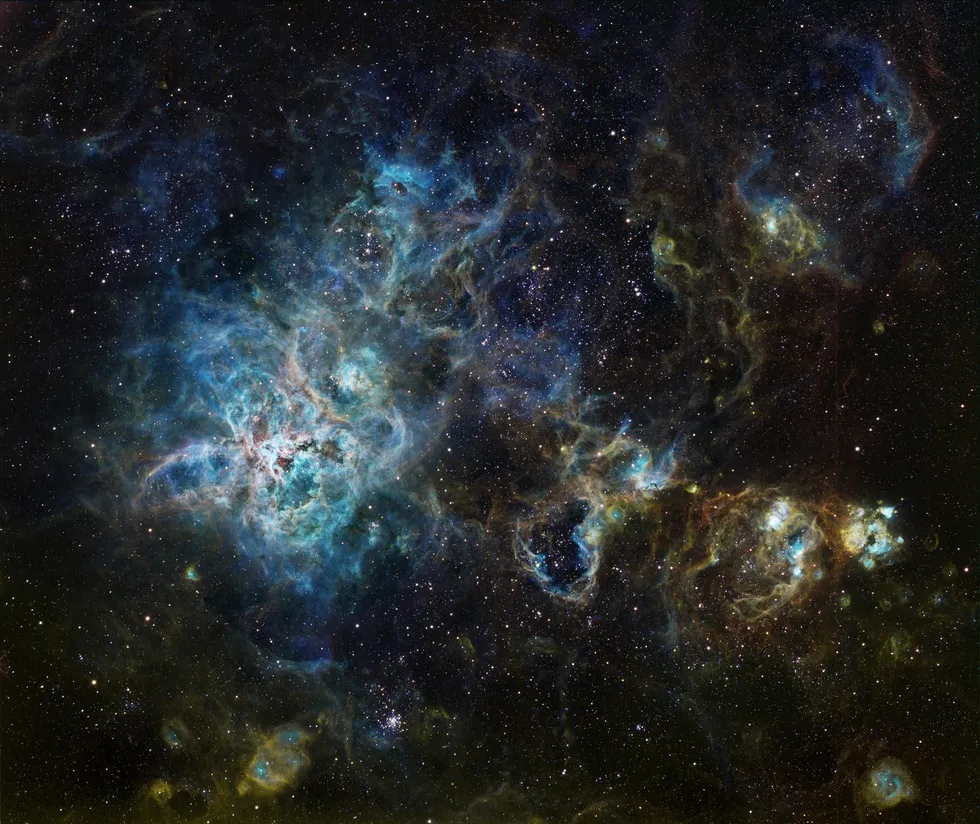What is the Tarantula Nebula
The Tarantula Nebula, also known as 30 Doradus, is a vast and stunning star-forming region located in the Large Magellanic Cloud (LMC), a satellite galaxy of the Milky Way. This nebula is a celestial marvel, a powerhouse of star formation, and a jewel in the southern sky. It’s one of the largest and most active star-forming regions in our local galactic neighborhood, making it a prime target for astronomers seeking to understand the processes of stellar birth and evolution. Its intricate structure, vibrant colors, and sheer size make it a favorite subject for both professional observatories and amateur astrophotographers. The Tarantula Nebula is a window into the dynamic processes that shape galaxies and the stars within them, providing invaluable insights into the life cycle of stars, from their fiery beginnings to their eventual demise.
Discovering the Tarantula Nebula
The Tarantula Nebula has a rich history of discovery, with its presence noted by early astronomers. The nebula’s prominence in the southern sky made it visible even without sophisticated telescopes. Its unique appearance, resembling a giant spider, earned it the nickname “Tarantula” after the appearance of the spider. The first recorded observation of the Tarantula Nebula is often attributed to French astronomer Nicolas-Louis de Lacaille in the mid-18th century. This early observation laid the foundation for the detailed study of this celestial phenomenon that would follow. The nebula has since been the subject of extensive investigation using various telescopes and instruments, from ground-based observatories to space telescopes like the Hubble Space Telescope, revealing its complex structure and ongoing star formation.
Location of the Tarantula Nebula
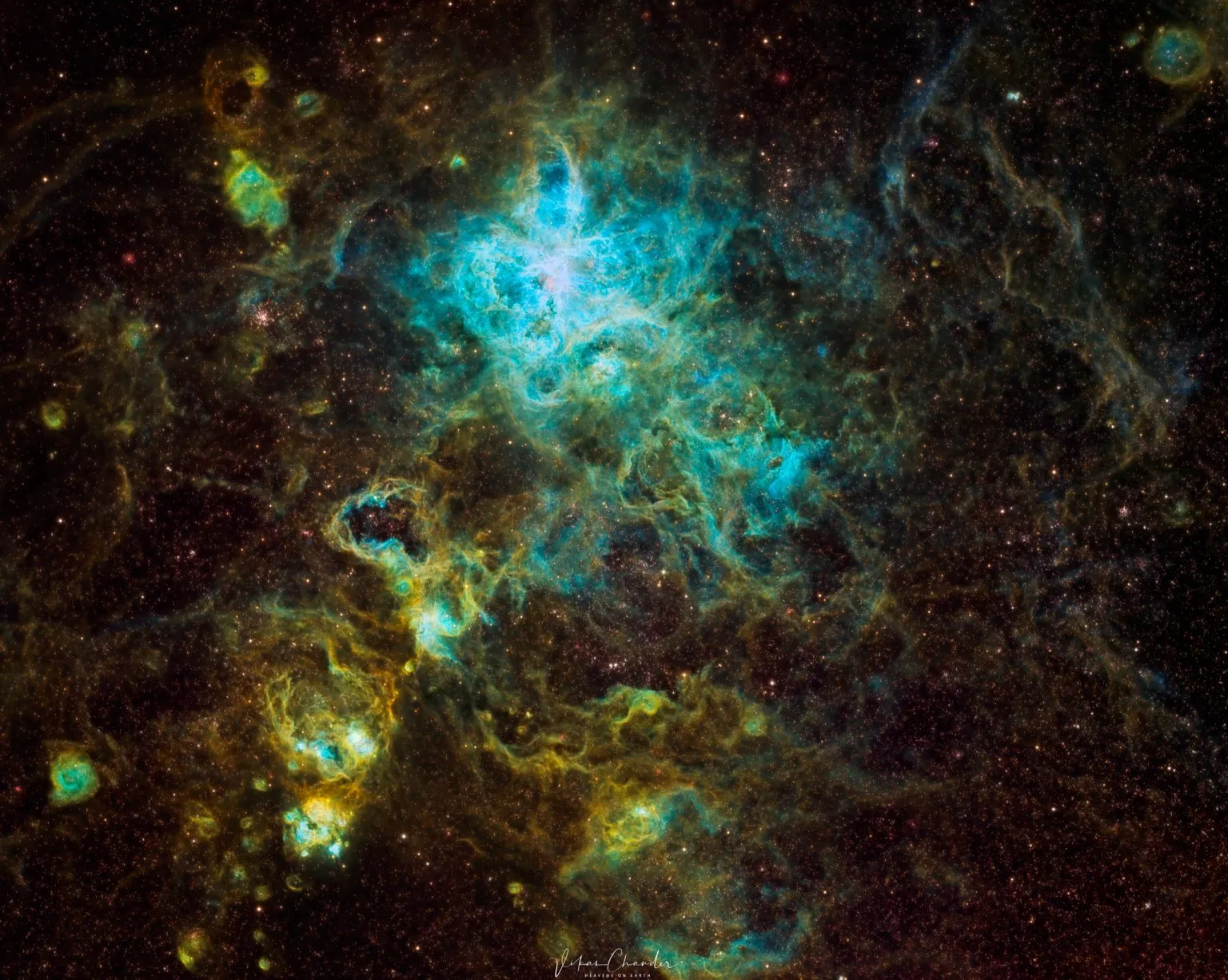
The Tarantula Nebula is situated within the Large Magellanic Cloud (LMC), a dwarf galaxy orbiting the Milky Way. The LMC is located approximately 160,000 light-years away from Earth in the constellation Dorado. The LMC’s proximity makes the Tarantula Nebula relatively easy to study compared to other, more distant star-forming regions. Its location in the southern celestial hemisphere also makes it accessible to observatories in the Southern Hemisphere, further enhancing its study. This strategic placement allows astronomers to gather detailed data, making the Tarantula Nebula a key area for research into the life cycle of stars and galactic evolution. The nebula’s location in the LMC offers a unique vantage point for understanding star formation in a different galactic environment than our own Milky Way.
Size Comparison
Understanding the size of the Tarantula Nebula puts its other characteristics into perspective. Its massive size is one of its most striking features. The nebula spans about 1,000 light-years across, which is truly enormous. The Tarantula Nebula is significantly larger than many other nebulae, which further emphasizes its role as a major stellar nursery. The comparison to other nebulae helps scientists and enthusiasts appreciate the scale of cosmic structures and the vastness of space. The sheer scale of the Tarantula Nebula highlights the intense star formation activity within it, making it a valuable object for astronomical research.
How Big is the Tarantula Nebula
The Tarantula Nebula spans an astonishing 1,000 light-years in diameter. This extraordinary size means that if the nebula were placed at the center of our solar system, it would engulf everything from the sun to well beyond the orbit of Pluto. This is a mind-boggling scale, even within the context of the vastness of space. The nebula’s enormous size is a direct result of the intense star formation occurring within it. The energy released by newly formed stars, coupled with the powerful stellar winds, has inflated the nebula to its immense proportions. Its size makes it a prominent feature in the Large Magellanic Cloud and a spectacular sight through telescopes.
Comparing to Other Nebulae
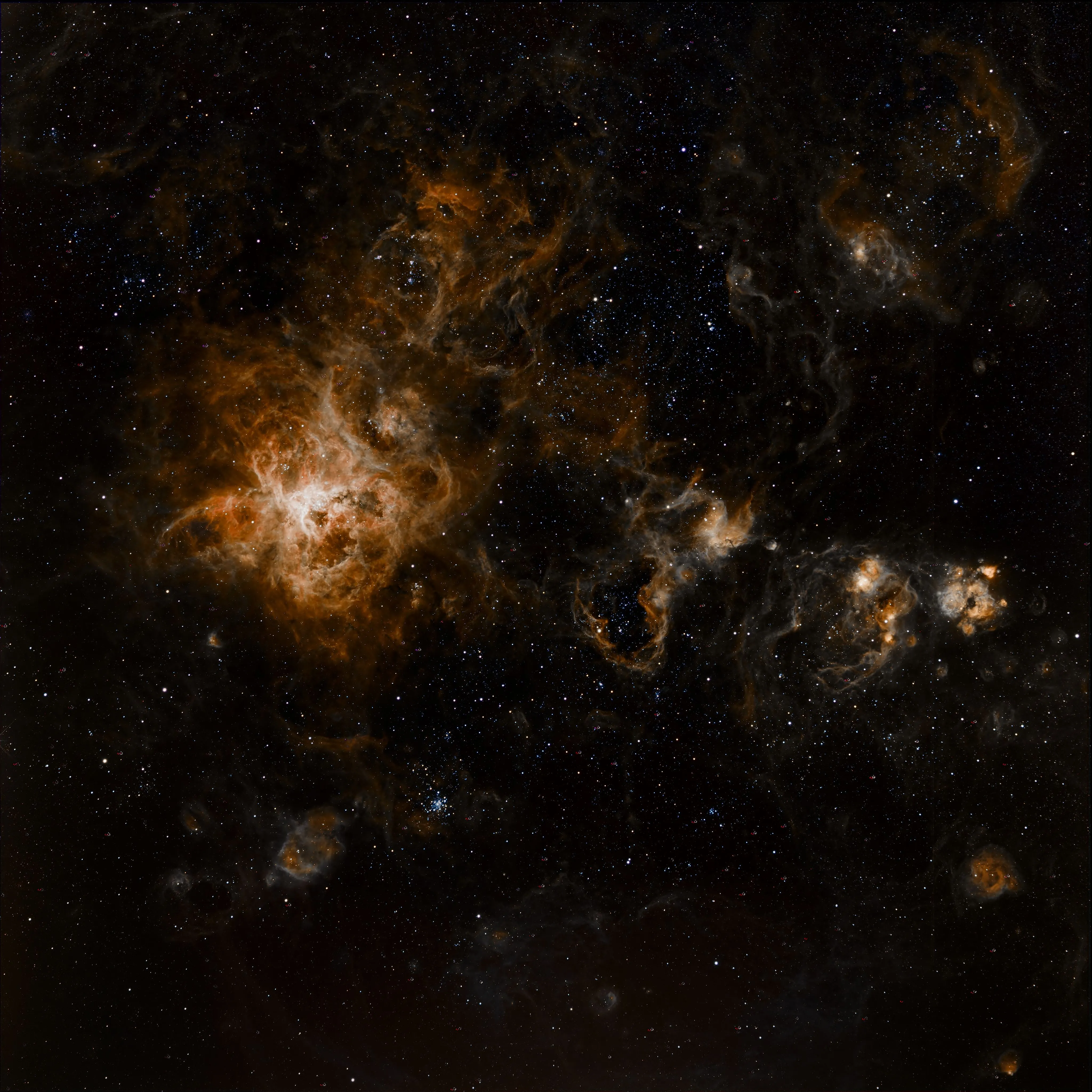
Compared to other nebulae, the Tarantula Nebula is exceptionally large and active. The Orion Nebula, for instance, is a well-known star-forming region in our own galaxy, but it is smaller than the Tarantula Nebula. The Orion Nebula spans roughly 24 light-years across. The size difference highlights the extreme star formation activity within the Tarantula Nebula. This is, in part, due to the presence of a super star cluster, R136, which is the source of immense energy. Comparing the Tarantula Nebula to other nebulae helps scientists understand how star formation processes vary in different environments, and helps to understand the evolution of galaxies.
Astonishing Facts about the Tarantula Nebula’s Size
Fact 1 Its Supermassive Star Formation
The Tarantula Nebula is home to some of the most massive stars ever observed. This region is actively forming supermassive stars, which are stars with masses exceeding 100 times that of our Sun. These stars have incredibly short lifespans, burning through their fuel much faster than smaller stars. Their formation and subsequent evolution are critical to understanding the life cycle of stars and the chemical enrichment of galaxies. The supermassive stars within the Tarantula Nebula generate immense amounts of energy, illuminating the nebula and shaping its structure. They also play a crucial role in the evolution of the LMC, influencing its chemical composition and overall appearance. The presence of these stars makes the Tarantula Nebula a unique and highly valuable site for astronomical research.
Fact 2 Home to a Stellar Nursery
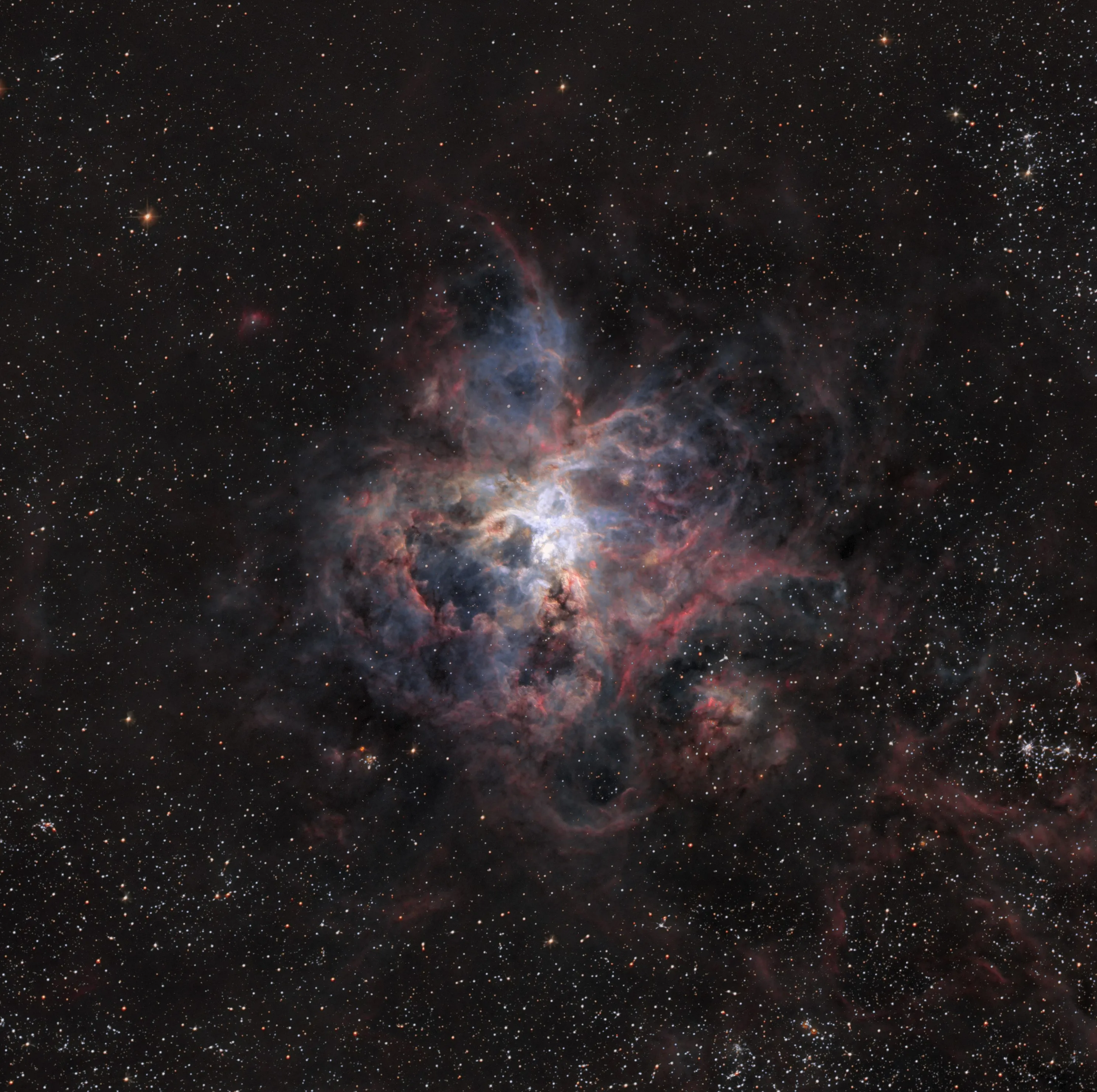
The Tarantula Nebula serves as a dynamic stellar nursery, where thousands of stars are being born. This process is visible through the emission of various wavelengths of light, from infrared to ultraviolet. The nebula contains vast clouds of gas and dust, the raw materials from which stars are formed. These clouds collapse under gravity, initiating the star formation process. The Tarantula Nebula’s stellar nursery aspect is visible through the presence of numerous protostars and young stars, which can be seen scattered throughout the nebula. This active star formation makes the Tarantula Nebula an essential target for scientists studying the early stages of stellar evolution. Studying the Tarantula Nebula helps astronomers understand how stars form in different environments and how they evolve over time.
Fact 3 A Cosmic Giant
As mentioned, the Tarantula Nebula is a cosmic giant, stretching approximately 1,000 light-years across. To put this into perspective, if the entire Milky Way Galaxy were scaled down to the size of the Tarantula Nebula, our galaxy would be only a fraction of the size. The nebula’s sheer size underscores the incredible energy and activity happening within it. This huge scale helps it support multiple star-forming regions, each with unique characteristics. The Tarantula Nebula’s size also makes it a crucial element of its host galaxy, influencing its structure and evolution. Its immense size makes it easily observable through telescopes.
Fact 4 Visible with Small Telescopes
Despite its vast distance, the Tarantula Nebula is bright enough to be observed with modest telescopes. Amateur astronomers, equipped with relatively small telescopes, can enjoy the beauty of the Tarantula Nebula. The nebula’s high luminosity makes it easier to spot compared to other nebulae. While it is best viewed under dark skies and with larger telescopes, even smaller instruments can reveal its structure and vibrant colors. This accessibility makes the Tarantula Nebula a popular target for astrophotographers and amateur astronomers worldwide. The ease of observation allows a broader audience to appreciate the wonders of space and the dynamic processes of star formation.
Fact 5 Shining Bright
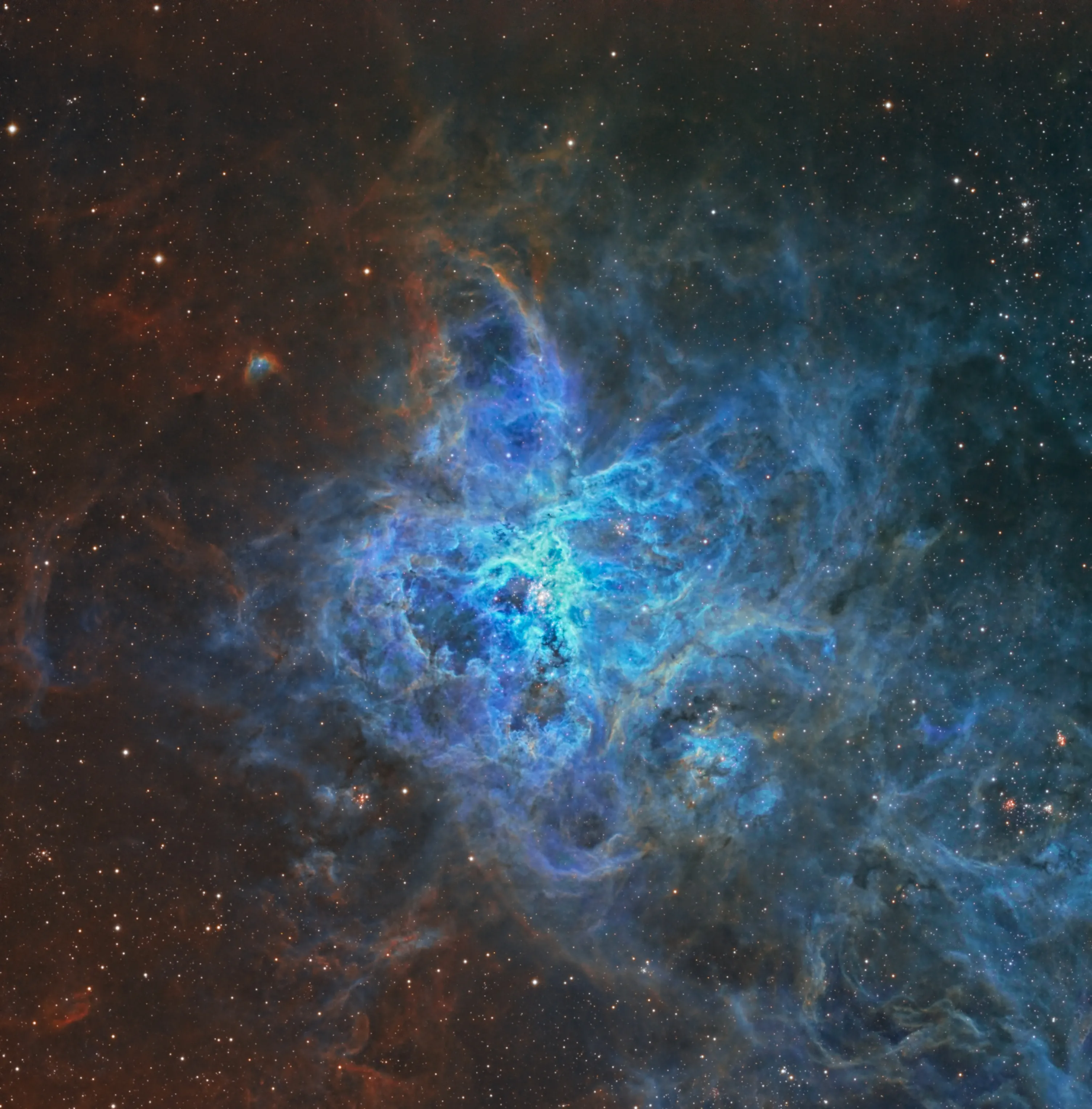
The Tarantula Nebula shines brightly due to the high density of young, hot stars within it. The energy released by these stars, particularly the supermassive ones, causes the surrounding gas to glow. The nebula is rich in ionized gases, especially hydrogen, which emits a characteristic red light. The color of the Tarantula Nebula is a combination of this red light with emissions from other elements, resulting in a colorful spectacle. This brightness allows it to be observed from Earth, offering a stunning visual treat through telescopes and astrophotography. The luminosity also indicates a very high rate of star formation, making it a valuable object for studying the dynamics of star formation in a galactic context.
Conclusion
The Tarantula Nebula is an extraordinary celestial object, offering a unique window into the processes of star formation and galactic evolution. Its immense size, active star-forming regions, and the presence of supermassive stars make it a prime target for astronomical research. From its discovery to its current status as a key object of study, the Tarantula Nebula continues to fascinate both scientists and amateur astronomers. Its accessibility with small telescopes, along with its dazzling appearance, makes it a favorite for astrophotographers and a symbol of the wonders of the cosmos. The Tarantula Nebula will undoubtedly remain an important area of study, providing invaluable insights into the life cycle of stars, and helping to further our understanding of the universe.
